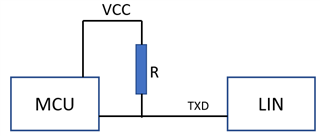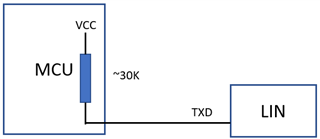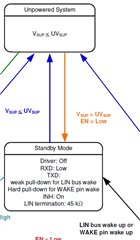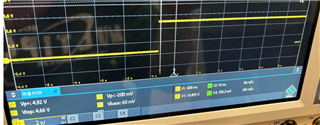Tool/software:
hi expert
i saw the following words in datasheet. i have two questions.
Q1: according to datasheet description, TXD pin can be pull-up by using pull up resistor. which is circuit more used widely, using pull-up resistor or NO pull-up resistor?
Q2: TXD usually is connected to MCU IO. And MCU IO can be configurated as pull-up mode in MCU internal. if so, whether is external pull-up resistor needed to add to TXD pin?






